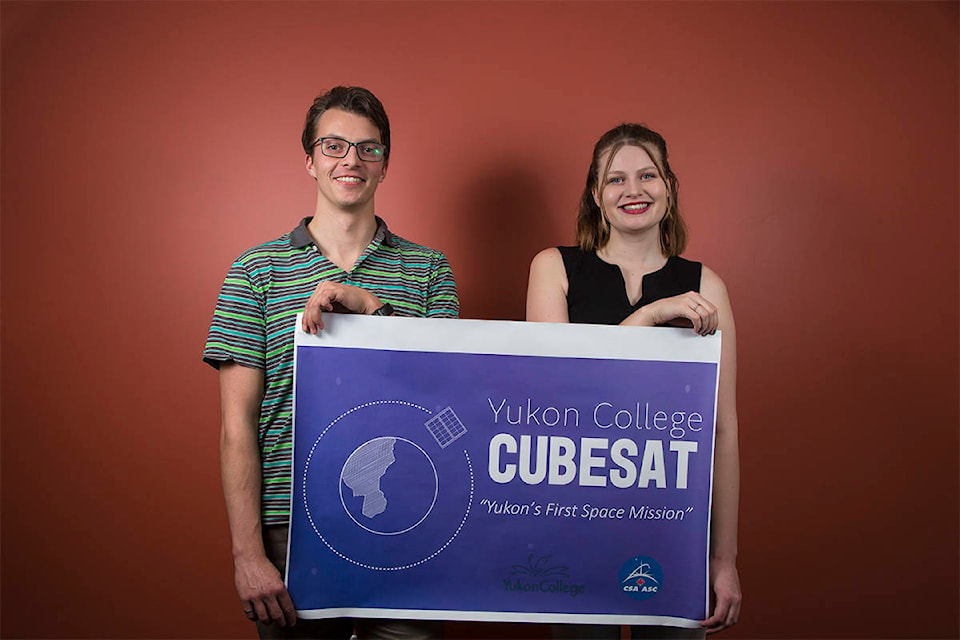Where in the Yukon do you buy the parts to build a micro-satellite for NASA?
You don’t, says Spencer Sumanik, but that’s where internet comes in handy.
“DigiKey is like the online Canadian Tire (for that kind of thing),” says Sumanik, principal investigator for the Yukon College CubeSat Project. Now that the project has a defined mission, Sumanik says he’ll need to start picking up components, including sensors from DigiKey, in 2019. It’s been months in the making.
Last May, the college was chosen, in partnership with Aurora College and the University of Alberta, to participate in the Canadian CubeSat Project.
Funded by the Canadian Space Agency, the project provided grants for 15 CubeSats across Canada.
As part of that selection, the school received a grant to plan, design and build a CubeSat (a tiny satellite, small enough to be held in your hands).
Sumanik says his group has been working, mostly on paper, since then.
This fall, the group held a contest to determine what the CubeSat would do once NASA launches it 400 km into orbit in 2020, for three to 12 months.
Annabelle Grant had the winning idea, which is to track solid waste in oceans through photographs from low-Earth orbit.
Grant, a self-professed geek (“I watch all the Star Trek, all the Star Wars”) is a second year psychology student from Brock University in Ontario. She came to the Yukon for a year-long exchange in the school’s liberal arts program and saw the call for ideas being advertised on campus this fall.
“And I was like ‘What? A satellite!’” she says. She says she’d never worked on anything related to aerospace engineering, but space has always been part of her life.
“My dad is a giant space nerd so I’ve always talked about space with him and built models with him. When something cool pops up on the NASA page, he texts me.”
When she texted him to share the news, he didn’t believe her at first. Once he realized she was serious, she says he was quite proud.
Grant says she focused on the idea she did because she tries to live an eco-friendly life, creating a minimal amount of waste, and keeping up with the state of the oceans.
“I think some people think there’s not as much waste as there is, or that the cleanup is getting rid of everything,” she says.
Sumanik says having a specific project won’t change the way the group approaches the CubeSat going forward, but it will allow for smoother design.
“If we had started with design and weren’t sure what (the CubeSat) was going to do, we wouldn’t know how to build it,” he says.
Though the design is open-ended, there are restrictions and limitations.
Due to the CubeSat’s size, there’s only so much the team has to work with in terms of power, volume and mass. The satellite can’t measure the atmosphere, for example, because the tools necessary for that are expensive, and would be too big to fit on the satellite, which measures 10 cm x 10 cm x 20 cm.
The team is also restricted by NASA safety guidelines, including that there can’t be any pressurized materials. So, for example, sending up a petri dish with algae, to see how it reacts in space, would be off-limits because it requires a pressurized container.
Despite the specialized-sounding nature of the work, Sumanik says anyone can volunteer to participate in the project. Grant says that since joining herself, which she did after submitting her idea, she has found it exciting even if she doesn’t understand all the engineering that goes into the planning.
There are about 10 consistent team members, with another five or 10 people who come when they can to help out. Sumanik says experience range from his own, as someone with a masters of aerospace engineering, to students of business, education, and high school students from F.H. Collins and Wood Street School.
“There’s no experience required,” says Sumanik. “If somebody has an interest, we will provide the information. We’re all learning as part of this project. None of us are experts by any means.”
Visit yukonsat.ca for more information.
Contact Amy Kenny at amy.kenny@yukon-news.com
